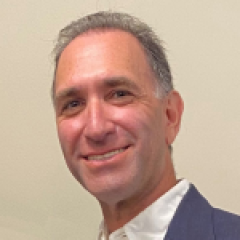The Answer Sheet: To Help Kids Succeed, This Rural School Gets Help From Unusual Sources. Dentists, for Example.

(Provided by Leland and Gray Union Middle and High School)
(This is the fourth in a series of posts about schools named as winners in the 2015-2016 Schools of Opportunity project. You can find the first post here and the second here and the third here.)
If you listen to the school reform debate these days, you would be forgiven for thinking that public schools across the board are failing students and that schools that are struggling can only improve if they fire all of their staff, become a charter school or let the state take them over. It’s just not so.
This is clear in a project called the Schools of Opportunity, launched a few years ago by educators who sought to highlight public high schools that actively seek to close opportunity gaps through 11 research-proven practices and not standardized test scores (which are more a measure of socioeconomic status than anything else).
The project assesses how well schools provide health and psychological support for students, judicious and fair discipline policies, high-quality teacher mentoring programs, outreach to the community, effective student and faculty support systems, and broad and enriched curriculum. Schools submit applications explaining why they believe their school should be recognized.
The project started in 2014 as a pilot program in New York and Colorado, and went national in 2015-2016, with gold and silver winners coming from states including Maryland, Georgia, California and Oregon. It is the brainchild of Kevin Welner, director of the National Education Policy Center at the University of Colorado at Boulder and a professor specializing in educational policy and law; and Carol Burris, a former award-winning principal in New York who is now executive director of the nonprofit Network for Public Education.
Twenty schools were named as honorees for the 2015-16 school year — eight gold winners and 12 silver — and you can see the list here. This is the fourth in a series of posts I will publish that highlight why each of the schools was chosen to be honored. It is important to note that each school found success in ways that met the needs of their own communities.This week’s winner is Leland and Gray Union Middle and High School in Vermont, and the post was authored by Welner and Burris.
By Carol Burris and Kevin Welner
High School: Leland and Gray Union Middle and High School
City and State: Townshend, Vermont
Principal: Bob Thibault
Superintendent: Bill Anton
Enrollment: 325
Economically disadvantaged students: 46 percent
Leland and Gray Union Middle and High School, a full-service school in rural southeastern Vermont, serves grades 7 through 12. The school’s educators and students prove year in and year out that high academic expectations can be met in communities with rural poverty if supports and opportunities to learn are strong.
Over the past six years, Leland and Gray increased academic expectations by adding Advanced Placement courses beginning in seventh grade, thereby detracking the student body into a single, universal college-preparatory curriculum. Even as it leveled up curriculum for all students, it built in assistance for those who struggled, adding support classes to go along with the AP classes.
With academic barriers removed, the school then focused on the other factors impeding academic progress.
So, working in collaboration with local partners, the school attends to the educational and developmental needs and aspirations of the whole child. In addition to expanding the role of the school social worker, the school partners with mental health clinicians in order to reach all struggling students. These professionals provide services to 30 percent of the student body over the course of the school year.
To immediately and effectively address any mental health crises among students, the school’s administration developed tight procedures along with support for parents, all in collaboration with the local mental health agency.
When some students were found to lack dental care, the school raised funds to provide cleanings, checkups, and treatment with the local dentist — all right in the school. With Grace Cottage Hospital one block away, Leland and Gray allows students access to a full range of medical services. The school also put in place a busing program that eliminates transportation as the obstacle standing between a student getting health services.
Leland and Gray did not do it alone; it found partners for this work.
The Stratton Foundation’s generosity has allowed every student without insurance to receive dental care, and a 21st Century Community Learning Centers grant brought dozens of academic, recreational, arts, and athletic opportunities after school and in the summer for students. Another partner is West River Valley Thrives, a substance abuse prevention coalition, to bring education and activities that inspire students to lead substance-free lives.
“At Leland and Gray, we believe that developing trusting and meaningful relationships is essential for good health and learning,” said Melanie Zwolinski, director of Student Services at the school. “When students feel safe and know that they matter, they are better able to learn and grow.”
Caring for the whole child in a rural community that sometimes struggles with poverty has made Leland and Gray a gold School of Opportunity.
(Provided by Leland and Gray Union Middle and High School)
This blog post has been shared by permission from the author.
Readers wishing to comment on the content are encouraged to do so via the link to the original post.
Find the original post here:
The views expressed by the blogger are not necessarily those of NEPC.



